
|
Chinese language characters are hieroglyphic diagrams that imitate shapes of real objects. However, there has been several thousands of years of Chinese symbol history. So you may not be able to find easily today's modern Chinese characters resembling things because they have been symbolized and regulated for the sake of easy writing. | |||
Creation of Chinese characters
According to the records of ancient books, one of Yellow Emperor's Chancellors Cang Jie (仓颉) created Chinese characters. He lived at 6000 ¨C 7000 years ago and was said to have four eyes. Ancient book "Huai Nan Zi" said, "In the past, Cang Jie created characters, because of which grains fell from sky and night ghosts cried." After the creation, Chinese characters have experienced four major periods in the development. They are Tortoise Shell and Bone Inscriptions, Bronze Inscription, Seal Script and Regular Script. The shapes and structures of the Chinese characters in each period are different. | |||
The evolving process of Chinese symbol for "home" (家)
| |||
Tortoise Shells and Bone Inscriptions (Jia-Gu-Wen)
The earliest Chinese characters found in unearthed relics are "Jia-gu-wen" or "Tortoise Shell and Bone Inscriptions" that dated from Shang Dynasty of more than 3000 years ago. Up to now, 150,000 pieces of Tortoise Shell and Bone Inscriptions have been unearthed. About 4500 characters have been found on these tortoise shells and bones and researchers have decrypted one third of the meanings. The contents of those Tortoise Shells and Bones Inscriptions relate to astronomy, calendar, weather, geography, nation, generations, family, persons, officials, war, prison, agriculture, cattle breeding, hunting, commuting, religion, disease, birth and disaster etc. | |||
Bronze Inscriptions (Jin-wen)Bronze Inscriptions or "Jin Wen" refers to the Chinese characters that were inscribed on bronze instruments. It started from the end of Shang Dynasty and became popular in the West Zhou Dynasty.
A total of over 3000 Bronze Inscriptions have been found in relics, in which the meanings of over 2000 characters have been identified by researchers. The topics talked about in Jin Wen texts were mostly related to the activities of nobles including fetes, commissions, expeditions, hunting units and contracts etc. The most representative Jin Wen texts are those inscribed on the Mao-gong-ding or "Tripod of Sir Mao", which is now preserved at the Taipei National Gu-gong Museum. See pictur | |||
Small Seal Characters (Xiao-zhuan)
Qin-shi-huang (the First Qin Emperor, 259 B.C. or 210 B.C.), after united China, found that Chinese characters in different areas were very complicated and in varied forms. So he initiated an act called "Write in same characters". He commanded Li Si to implement the work. This was the very first time to standardize the writings of Chinese characters in history. This process changed the strokes of earlier Chinese characters from having many turns to being well-regulated and convenient for hand-writing. These standardized Chinese characters are called Xiao Zhuan or Small Seal Characters. The right picture is a copy of Xiao Zhuan characters inscribed on the Stone from Yi Mountain (Yi Shan Bei). They look beautiful, don't they? | |||
Regular Script (Kai Shu)
Kai Shu, also called Regular Script, is featured for its square outlook and straight strokes, which is why it is named as Kai Shu, the Model Font. It started from East Han Dynasty (24 A.D. ¨C 220 A.D.). This is the font that are mostly used today. There are quite a few well-achieved Kai Shu Calligraphers including Yu Shi-nan, Ou-Yang Xun, Chu Sui-liang, Yan Zhen-qing, Wang Xi-zhi and Liu Gong-quan etc. These calligraphers have left many stone inscriptions if their writings, which are the original models for today's people to learn Chinese character writings from. Please note that the Regular Script addressed here only refers to the "Traditional Chinese". The so-called "Simplified Chinese" is a totally different thing created by the Communist Party, which has lost and damaged the essence of Chinese characters as a unique system of shape-imitation symbols. See my Chinese Language page for details on the comparison between Traditional Chinese and Simplified Chinese. |
Actually even nowadays, many calligraphers like to write in Xiao Zhuan font in calligraphy works because Xiao Zhuan has the combined merits of easiness in writing and the earlier Chinese characters' resemblance to shapes of real objects. This feature makes Xiao Zhuan characters look both beautiful and meaningful. This is also the font that many Chinese people like to use for their seals.
If you want to find the anceint form of your Chinese name or favorate Chinese characters, you can follow these steps:
As examples, I have listed below some characters' ancient forms. You can see the Chinese symbol's evolving history from them.
| Meaning | Jia Gu Wen | Jin Wen | Xiao Zhuan | Kai Shu |
|---|---|---|---|---|
| sun | 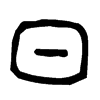 | 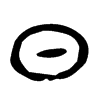 | 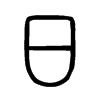 | 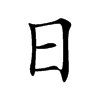 |
| moon | 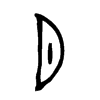 | 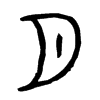 | 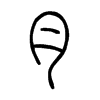 | 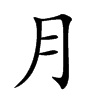 |
| human | 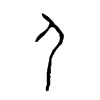 | 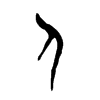 | 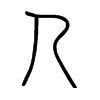 | 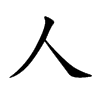 |
| mountain | 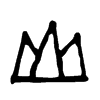 | 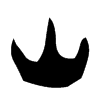 | 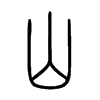 | 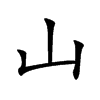 |
| bird | 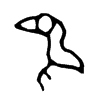 | 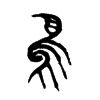 | 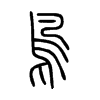 | 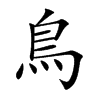 |
| fish | 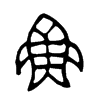 | 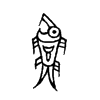 | 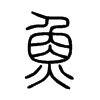 | 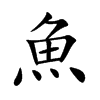 |
Go to top of page "Chinese Symbol History"
Return from "Chinese Symbol History" to "Foreigners in China"